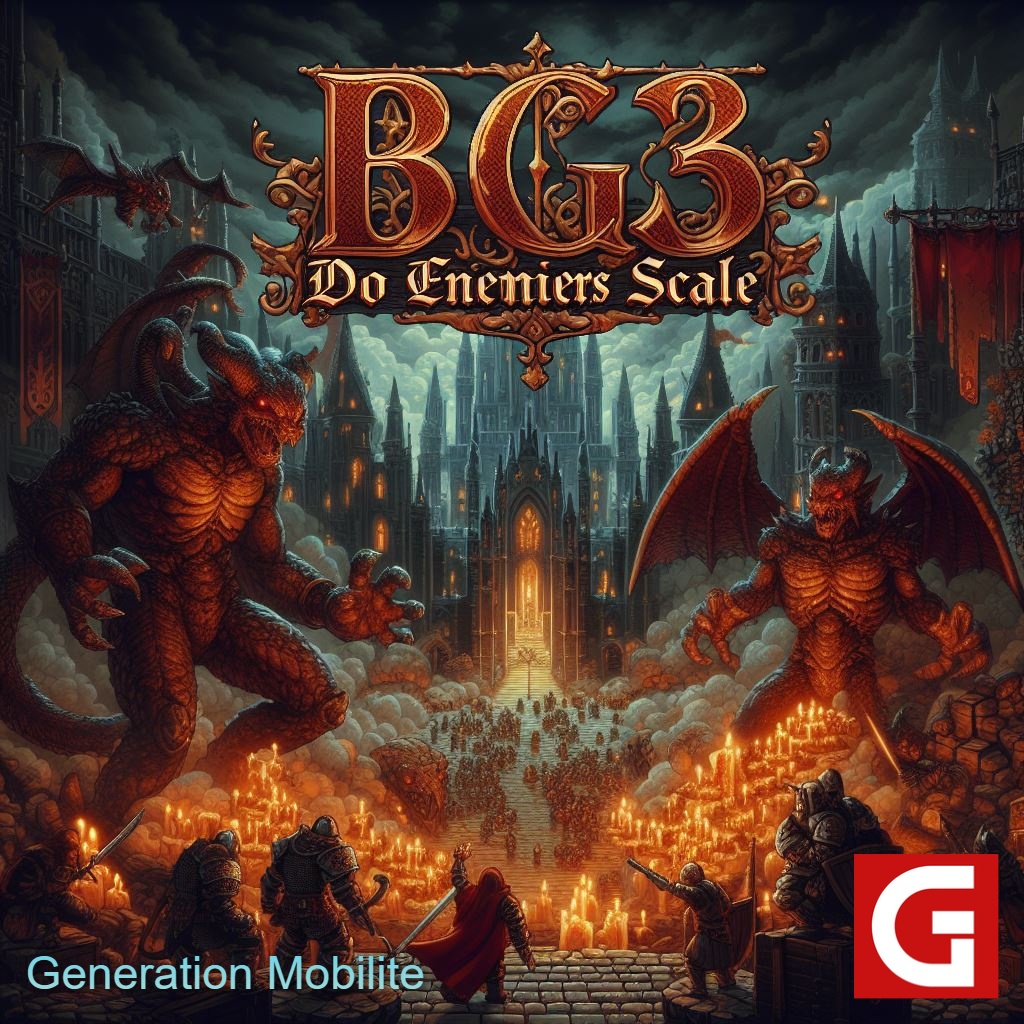The world of Baldur’s Gate 3 (BG3) is fraught with grave dangers, where every battle could be your last. But does the game adjust these threats to match your increasing skill? Or do early foes remain just as deadly even after you’ve honed your abilities? I will uncover the complex workings of BG3’s enemy scaling systems.
What is Enemy Scaling?
Enemy scaling refers to game mechanics that increase or decrease the statistical qualities of enemies based on the player’s progression and power. This includes attributes like:
Implemented thoughtfully, scaling systems help maintain the ideal level of challenge as the player grows stronger. Games without scaling often suffer from:
- Trivial enemies: Early foes become damage sponges offering little threat.
- Insurmountable enemies: Late game enemies can feel unfairly punished.
- Limited progression: New abilities feel meaningless when enemies remain equally deadly.
Well-balanced scaling preserves engagement and rewards player improvement across the entire experience.
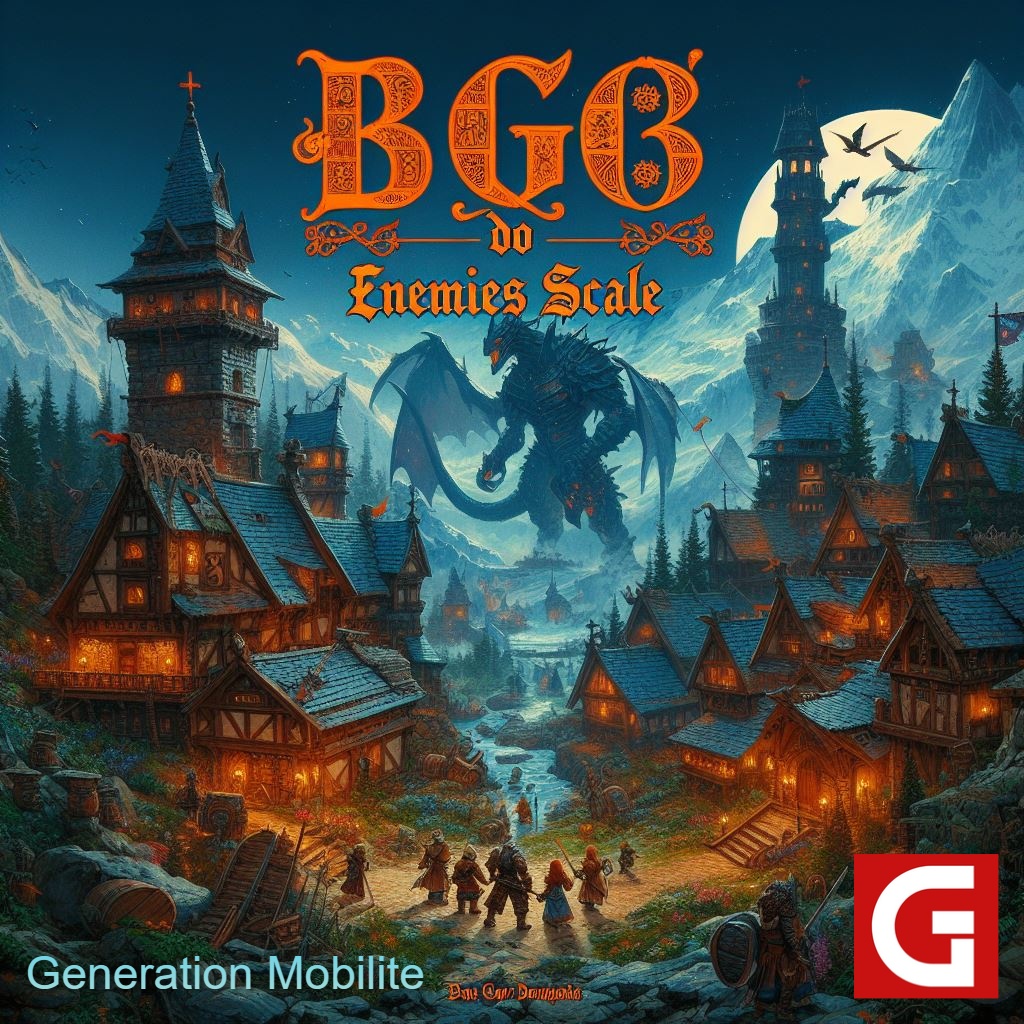
What are requirements For Playing BG3 Do Enemies Scale?
Minimum requirements
| OS | Windows 10 64-bit |
| Processor | Intel i5-4690 / AMD FX 8350 |
| Memory | 8 GB RAM |
| Graphics | Nvidia GTX 970 / AMD Radeon RX 480 (4GB+ of VRAM) |
| DirectX | Version 11 |
| Storage | 150 GB available space |
Widely Recommended
| 1 | OS | Windows 10 64-bit |
| 2 | Processor | Intel i7-8700k / AMD Ryzen 5 3600 |
| 3 | Memory | 16 GB RAM |
| 4 | Graphics | Nvidia GTX 2060 Super / AMD RX 5700 XT (8GB+ of VRAM) |
| 5 | DirectX | Version 11 |
| 6 | Storage | 150 GB available space |
The Purpose of Enemy Scaling
So why do developers like Larian Studios implement adaptive scaling? What purpose does this serve?
Maintaining Challenge
The primary goal of scaling is to uphold a stimulating level of challenge. As the player gains experience and items, enemies adjust accordingly to remain threatening. This prevents the game from becoming a monotonous stomp over weak foes.
For example, early kobolds may have had 20 HP and dealt 2-4 damage. But in a high level area, upgraded kobolds could have 80 HP and deal 15-20 damage instead.
Encouraging Growth
Scaling mechanics also motivate the player to keep honing their skills and gear. If enemies remained static, you could coast through on initial abilities. But adaptive enemies force you to refine strategies and upgrade equipment to overcome escalating odds.
Pacing Progression
Careful scaling helps developers control the pace of progression through content. Areas can have overlapped level ranges since scaling prevents wide level gaps from making enemies either impossible or trivial.
This facilitates open exploration – a hallmark of the BG series. The world opens up through earned progression.
Read more:I Became a Crazy Swordsmanship Instructor in the Game
How Enemy Scaling Works
Behind the scenes, BG3 employs sophisticated scaling systems to modulate enemy difficulty. Let’s break down the key factors.
Average Party Level
One of the main inputs for scaling calculations is the player’s overall power level, summarized by the average level of the party. Higher level parties reasonably warrant stronger enemies.
A party of level 5’s may face standard kobolds. But at level 10, they could encounter elites like “Kobold Inventor” or “Kobold Dragonshield.”
Gear Score
The quality of the party’s weapons, armor, and accessories also feeds into scaling. A poorly equipped party will face easier foes than a highly outfitted group, even at equal levels.
For example, a party in plain leather armor and basic iron weapons may fight standard highwaymen. But if equipped in masterwork plate and powerful relics, they could instead face the “Highwayman Champion.”
Class and Build
BG3 also analyzes your party composition and builds. Clever skills and abilities allow you to overcome greater challenges. A tactically built party will scale faster than an unoptimized group.
Four well-designed synergistic builds could fight devastating witches. But four overlapping, redundant builds may struggle against standard animated armors.
Location Minimums
Certain high level zones have minimum requirements before enemies appear at all. For example, mythic Solasta may be inaccessible until reaching level 13. This maintains story progression and world integrity.
But within reachable areas, scaling still adapts encounter difficulty to provide an engaging experience.
The Pros and Cons of Scaling Systems
Adaptive difficulty remains controversial among players. Does it enhance enjoyment or undermine it? Here I break down the key trade-offs developers and players face.
| Pros of BG3 Scaling Systems | |
| 1. Enhanced Engagement | Dynamic Challenges: The scaling systems in BG3 ensure that encounters remain engaging and challenging throughout the game. This keeps players invested in the storyline, anticipating the next formidable adversary. |
| 2. Adaptive Gameplay | Strategic Thinking: The dynamic nature of enemy scaling promotes adaptive gameplay. Players must strategize and adjust their tactics based on evolving challenges, adding a layer of depth to the gaming experience. |
| 3. Player Progression | Continuous Growth: As characters progress, so do their adversaries. This continuous scaling ensures that players experience a sense of growth and accomplishment, making each victory more satisfying. |
| 4. Longevity of Gameplay | Extended Playtime: The adaptive difficulty ensures that the game remains challenging even for seasoned players, extending the overall playtime and providing a lasting experience. |
| 5. Immersion | Story-Driven Challenges: Scaled enemies contribute to a more immersive experience by aligning challenges with the narrative. This creates a cohesive and believable world where the difficulty corresponds to the storyline. |
Potential Benefits of Scaling
- Preserves challenge and intensity throughout the adventure.
- Rewards investment in skills, gear, and character builds.
- Allows open world exploration and sequence breaking.
- Customizes difficulty to player skill and preferences.
- -Reduces likelihood of hitting dead ends or boredom from weak enemies.
Possible Drawbacks of Scaling
| Cons of BG3 Scaling Systems | |
| 1. Potential Frustration | Sudden Difficulty Spikes: Some players may find the abrupt increase in difficulty frustrating, especially if they are unprepared for challenging encounters. This can lead to moments of frustration and a temporary loss of immersion. |
| 2. Impact on Immersion | Inconsistent Experience: Poorly implemented scaling systems can disrupt the immersion by creating scenarios where the difficulty feels detached from the narrative. This inconsistency may hinder the player’s connection with the game world. |
| 3. Limited Casual Gameplay | Barriers for Casual Players: The scaling systems might pose a challenge for casual gamers who prefer a more relaxed pace. Striking a balance between catering to dedicated players and providing a welcoming entry point for newcomers is crucial. |
| 4. Difficulty Adjustment Disparities | Varying Player Skill Levels: Players with varying skill levels may have different experiences with scaling systems. Some may breeze through, while others may struggle excessively, leading to an uneven playing field. |
| 5. Potential Predictability | Loss of Surprise: In some cases, predictability might set in as players anticipate scaled challenges. This could diminish the element of surprise, impacting the overall thrill of exploration and discovery. |
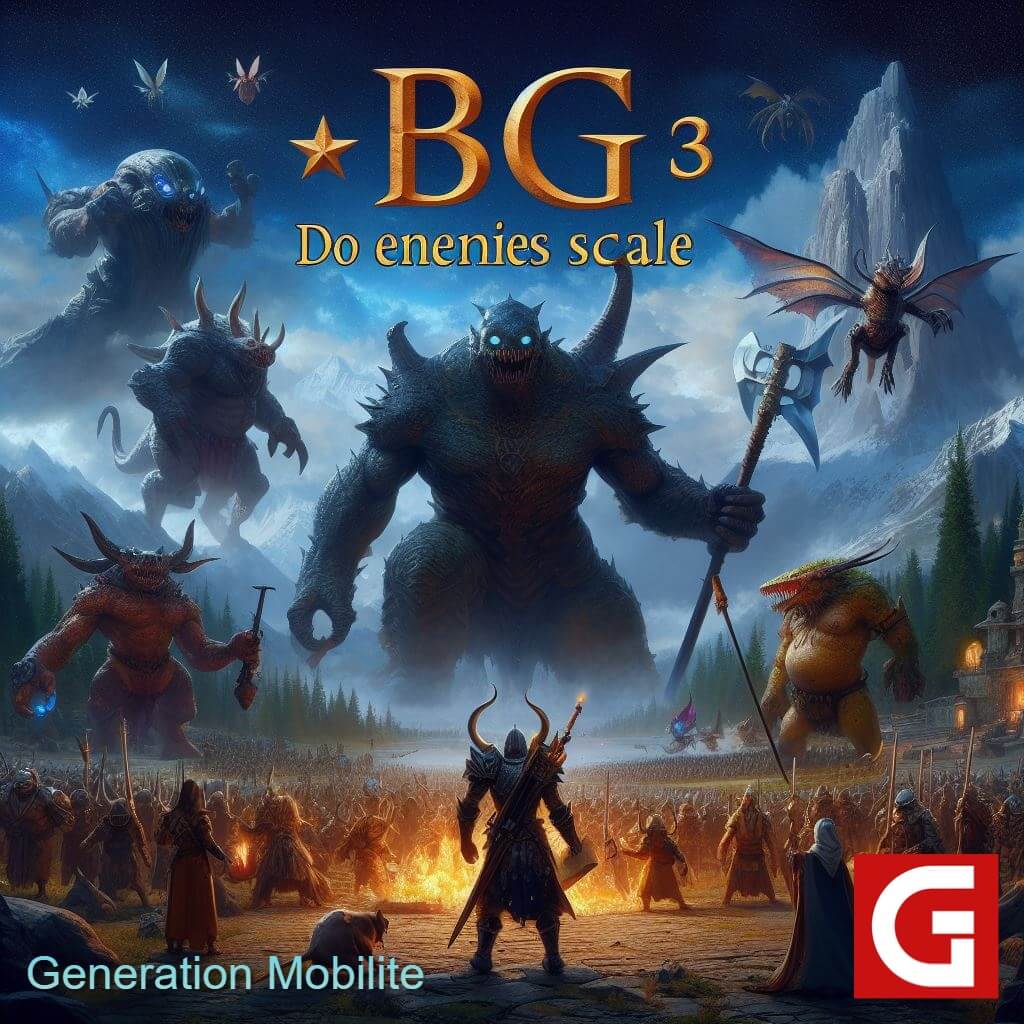
- Can diminish a sense of growth and power if early enemies remain threatening.
- Risks frustrating difficulty spikes if scaling is erratic.
- May strain credulity and immersion in some scenarios.
- Reduces long-term aspirational goals for character builds.
- Allows less room for deliberately over or under-leveled zones.
Overall, when executed judiciously, scaling seems to enrich the experience more than restrict it. But developers must strike the right balance.
How BG3 Calibrates Enemy Scaling
Larian Studios has clearly invested deep thought into how adaptive scaling manifests in BG3. Let’s analyze their design.
Smooth Progression in Challenge
BG3 avoids wild fluctuations in enemy stats. Scaling aims for steady, gradual progression. Each new area steps up danger modestly but noticeably. This prevents jarring spikes.
For example, melee gnolls may have 32 HP and deal 7-11 damage. Ranged gnolls could have 44 HP and deal 12-15 damage. Elites may get 68 HP and 17-23 damage. The escalation feels natural.
Feedback Loops
BG3 continually monitors player performance in encounters to dynamically calibrate scaling intensity. Breezing through battles may incrementally increase enemy power. Whereas struggles prompt downward adjustments.
This real-time adaptation feels akin to a DM tuning a tabletop module as it runs based on player skills and choices.
Zone Level Bands
BG3 zones include general level bands that inform scaling ranges. For example, the gnoll dominated Phlan Foothills may span levels 5-12. But the legendary ruins of Myth Drannor could range from 15-20.
These bands allow flexibility while avoiding huge outliers. Scaling still occurs, but within reasonable limits.
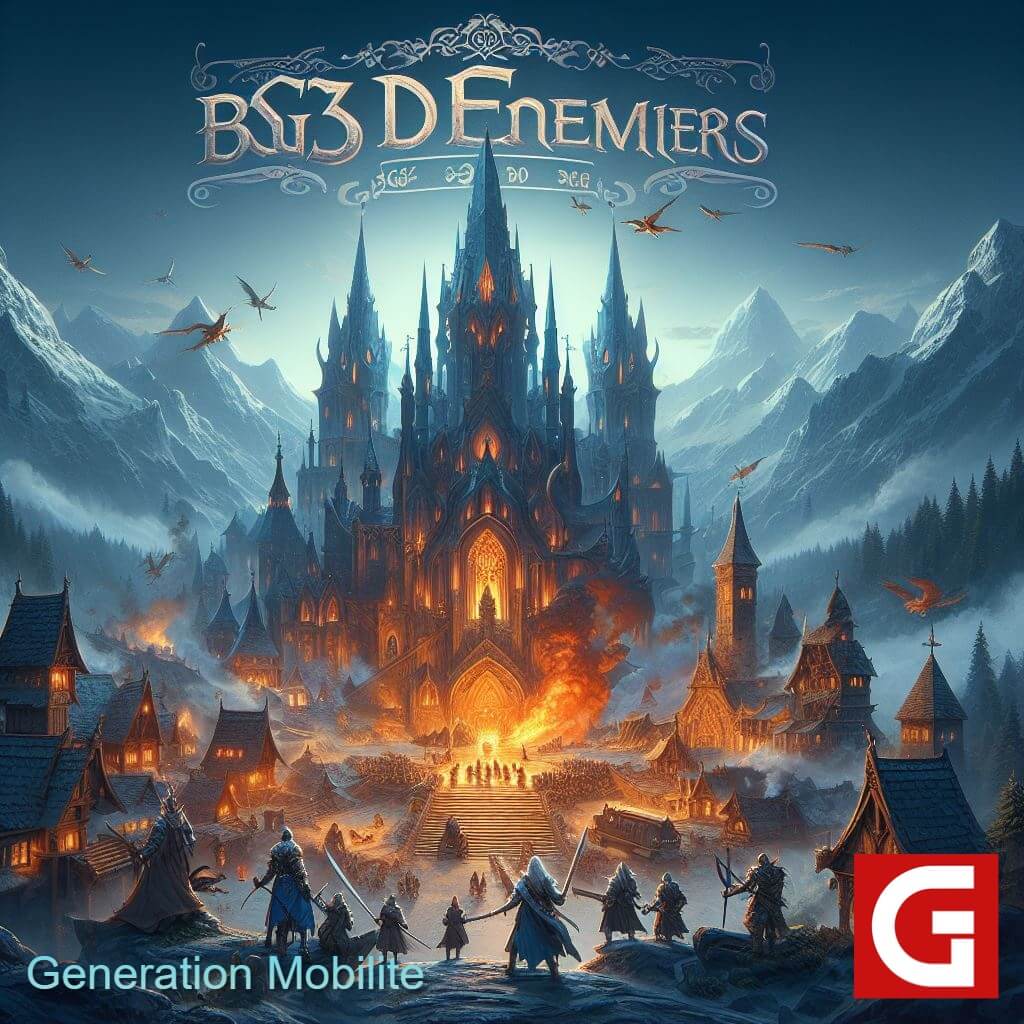
Impacts of Scaling on Gameplay and Experience
Adaptive enemies have profound impacts on core gameplay and overall game experience:
Drives Mastery
Players must continually hone skills and strategies to overcome escalating challenges. This mastery loop enhances engagement across the entire adventure.
For example, crowd control and battlefield manipulation grow in importance after brute force struggles. A clever party can punch above its weight through skillful play.
Facilitates Open Exploration
With scaling, players are free to wander more widely without hitting dead ends from overleveled enemies. Exploration feels boundless within reason, enhancing the classic Baldur’s Gate freedom.
Of course, minimum level zones still act as milestones for story progress. But scaling smooths the experience between thresholds.
Read Also:Baldurs Gate 3 Get Laezel Down- A Comprehensive Guide
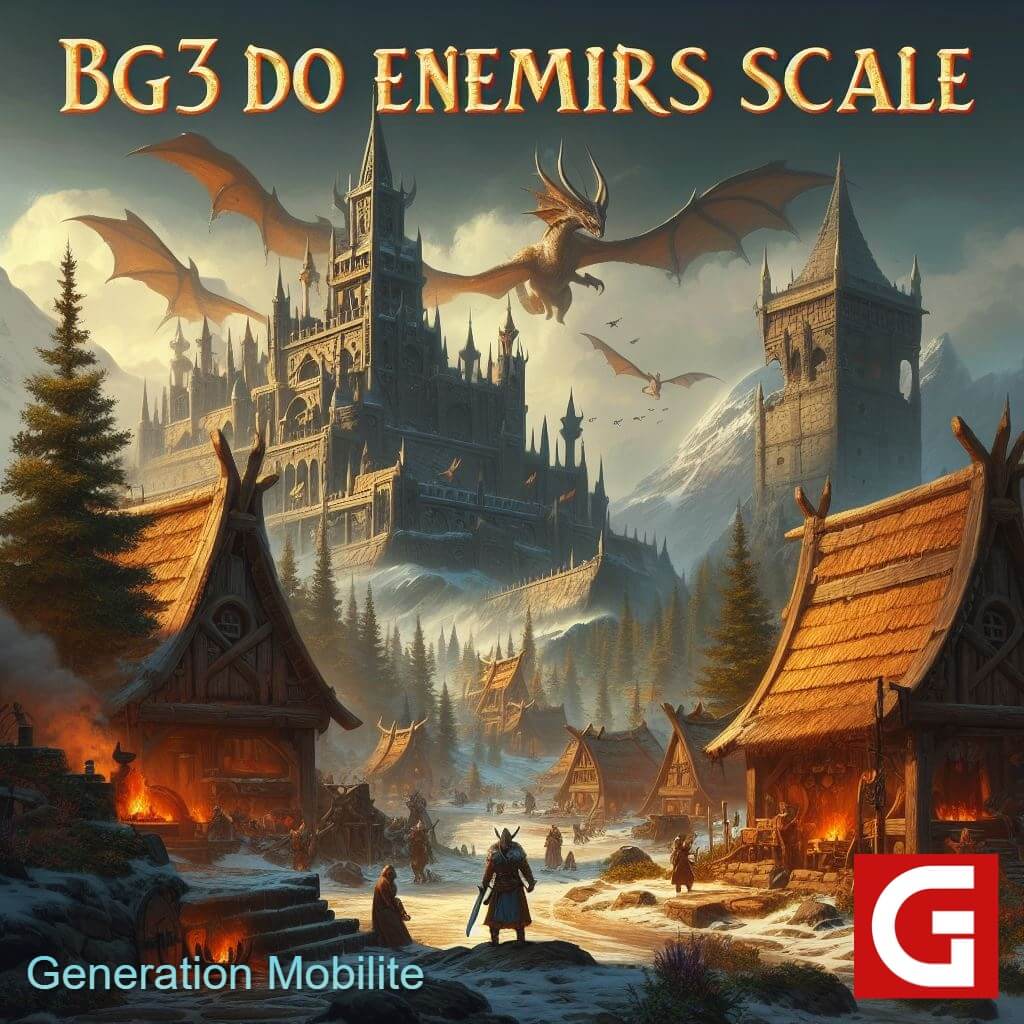
Rewards Character Growth
Scaling enemies make each new level, ability, and gear upgrade feel impactful. You directly observe their benefits in how much more you can overcome. This gratifying sense of growth motivates ongoing advancement.
Without scaling, new skills would barely register against static enemies designed for your starting power.
Player Strategies for Scaled Encounters
Defeating scaled foes demands equally adaptive strategies:
- Experiment with different tactics: Frontal assault, ambushes, choke points, etc. Observe what works.
- Target enemy weaknesses: Use radiant against undead, charm humanoids’ leaders, etc.
- Customise synergistic group builds: Controller, tank, dps, support roles etc.
- Scout ahead: Send invisible characters to assess enemy strength before committing.
- Know when to fold: Don’t bash against too powerful enemies, just retreat.
Smart preparation and flexibility are key to overcoming the unknown threats that scaling systems produce.
Developer Challenges in Balancing Scaling
For Larian, tuning BG3’s scaling algorithms requires walking a precarious tightrope:
- Scaling can’t negate player growth or trivialize advancement.
- Spikes in challenge due to scaling changes must be avoided.
- Allowing _some_ zones to be deliberately over or under-leveled enhances variety.
- Scaling intensity should offer difficulties settings or customization options.
- Transparency around calculations fosters player trust and understanding.
- Extensive play testing across character builds and group compositions is vital.
Priority number one is upholding fun and agency in the face of dynamic threats.
Community Reactions to Adaptive Enemies
Among the BG3 community, opinions on scaling vary, often falling into two camps:
Players Who Enjoy Scaling
- “The escalating challenges force me to master every ability!”
- “I love encountering enemies tailored to my party’s skills and gear.”
Players Who Prefer Less Scaling
- “I wish I could turn down the options.”
- “It’s weird seeing kobolds still deadly after 80 hours of play.”
This diversity of feedback will help Larian refine the systems over time. Open communication and transparency will be key.
The Future Evolution of Scaling Systems
We can expect BG3’s scaling mechanisms to keep evolving throughout early access and beyond:
- More extensive options could allow players to customize scaling to taste.
- Improved transparency around calculations will empower player agency.
- Ongoing tuning will smooth out any remaining rough edges.
- Diversity of enemy types and abilities will increase, keeping encounters surprising even with scaling.
- Ideally the algorithms will become so robust that scaling occurs entirely behind the scenes.
The goal will be dynamic difficulty that feels credible and fair at all times.
Evaluating Adaptive Enemies in BG3
In closing, enemy scaling in BG3 demonstrably elevates the experience for many players based on community sentiment. That being said, there is always room for refinement. Not all players appreciate adaptive difficulty uniformly.
The path forward lies in offering players more direct input to scale intensity to their preferences. The system also needs full transparency to feel credible. With thoughtful iteration, BG3’s algorithms could achieve the holy grail of scaling – adapting perfectly to each player’s abilities imperceptibly.
What is clear is that Larian has demonstrated uncommon insight in how adaptive enemies can uphold engagement while rewarding mastery and creativity. Players willing to similarly adapt and improve will find epic challenges awaiting around every corner in the wondrous yet dangerous world of Baldur’s Gate 3.


